Affiliate disclosure: This post may contain affiliate links. Please see our Privacy Policy.
Growing your own potatoes may seem like a simple act, but it can make a huge difference in terms of your self-reliance. Potatoes are a near-complete food, and there’s no better way to harvest a ton of calories from a small space than growing your own potatoes.
Potatoes grow on marginal soil, and they’re a great crop to plant in a new garden zone. Since the leaves are unappealing to deer, you can get potatoes growing even without a garden fence.
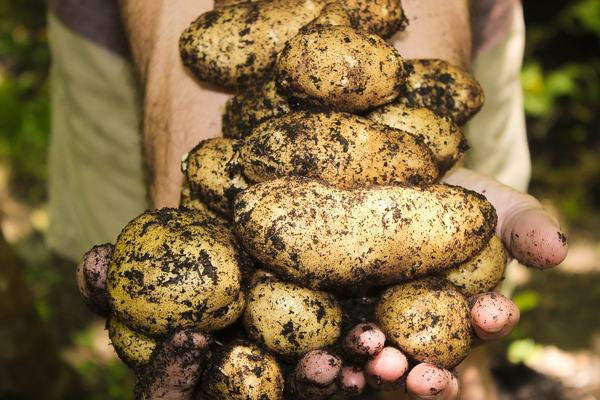
How to Sprout Potatoes
Potatoes seem to sprout all on their own in my pantry, except when I’m trying to get them to sprout in the springtime. It’s important to pre-sprout your potatoes to get them off to a good start. By exposing them to light, you trigger root and stem growth that will give them a head start before they go into the garden soil.
Potatoes don’t grow well in the summer heat, but they also don’t grow well in the cold wet soil in the early spring. That’s one reason they tend to grow best in Maine and Idaho because the summers aren’t particularly hot.
Pre-sprouting potatoes will allow you to get your potatoes off to a good start without putting them into cold wet spring soil that can cause disease. This head start means they’re growing well before summer heat comes on.
Sprouting potatoes, also known as chitting, can be done by placing potatoes in a warm dark space followed by a cool sunny space for a few weeks before planting. Start by putting potatoes in a dark but warm spot, about 70 degrees. This warmth helps break their dormancy, which will allow them to begin sprouting.
After that, move them to a cool sunny spot. Ideally, about 50 degrees but with good sun. This mimics spring growing conditions. Strong sunlight helps the sprouts stay green, short and stocky, which will help them remain attached and growing during planting.
Allow the green potato sprouts to grow to about 1-2 inches before planting. This should take about 3 weeks.
Don’t let the sprouting go beyond tiny green buds. Those long and leggy potato sprouts on a forgotten potato at the back of the bin are a lot of wasted energy. Most of those will break off during planting, and the potato used up most of its energy reserves creating them.
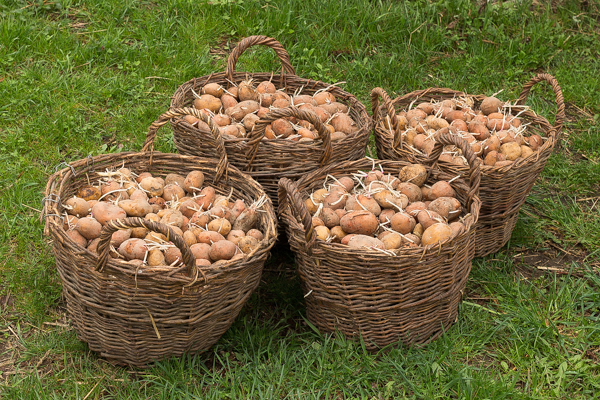
When to Plant Potatoes
Potatoes like to get growing well before the summer heat comes on. Plant potatoes directly in the garden 2 to 4 weeks before the last expected frost in your area.
Ideally, begin by chitting or green sprouting potatoes 4 weeks before planting. That means you need to begin pre-sprouting potatoes 6-8 weeks before the last frost and then plant them about 4 weeks later.
How to Plant Potatoes
Potatoes are usually cut into pieces before planting. This allows you to get more potato plants out of a single potato. People often ask, can you plant the whole potato?
Yes, you can. But you’ll end up with higher yields in the long run if you cut potatoes before planting.
Cut them into chunks, making sure that there’s at least 1 eye on each potato piece. Most people will tell you to leave the potato pieces out to dry and “heal” the cuts for a few days, but every time I’ve tried this in our moist Vermont climate, the whole thing just molds into one nasty mess.
Another method involves cutting the potatoes and then dipping the cuts into wood ash. This is much more dependable in a moist, humid climate, and the extra minerals in the wood ash will help the potatoes grow well in the long run.
Plant potato pieces about 4 inches deep and about 1 foot apart, in rows about 2 feet apart.
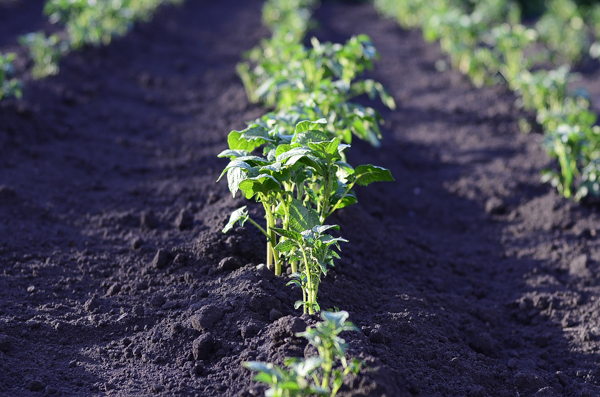
How to Grow Potatoes
The most common way to grow potatoes at home is the trench and hill method. Potatoes aren’t actually roots, they’re tubers, and they form as pieces of stem are buried underground.
The more stem that’s buried, the more potatoes are produced. This is true to a point because some of the potato leaves need to be above ground to gather sunlight energy.
With the trench and hill method, a trench is dug between two rows of potatoes. Every 2 weeks, that trench is dug a bit deeper and the dirt is mounded around the growing potato stems. Each time the potato plants are buried a bit deeper, but always leaving about 6-8 inches of stem and leaves above ground to continue gathering sunlight energy.
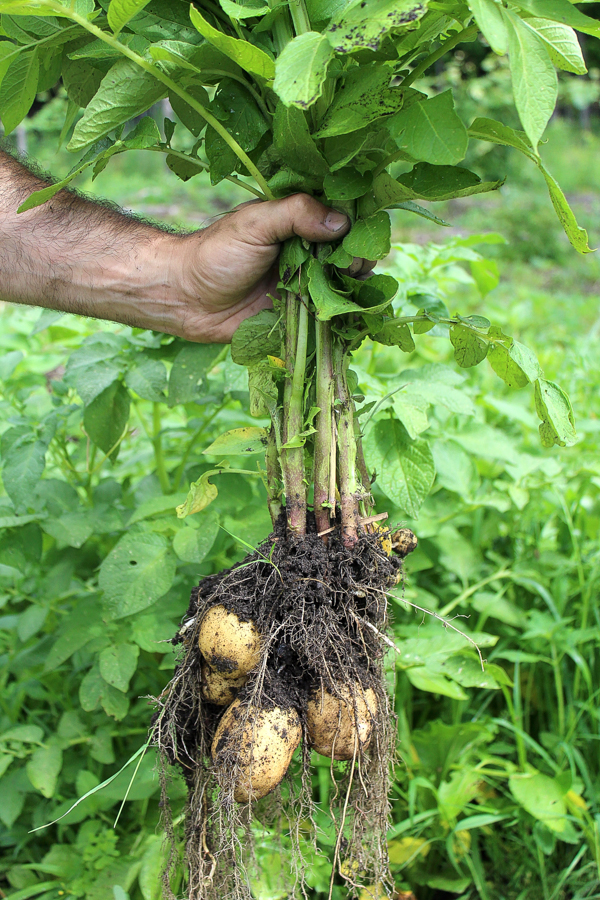
How to Harvest Potatoes
The soil around potato plants is generally pretty loose. It’s been slowly mounded up all season, and you’ve been walking in the trench. If you want to harvest just a few potatoes early in the season, just reach your hand in lower down on the mound and you can pull out enough for a quick dinner.
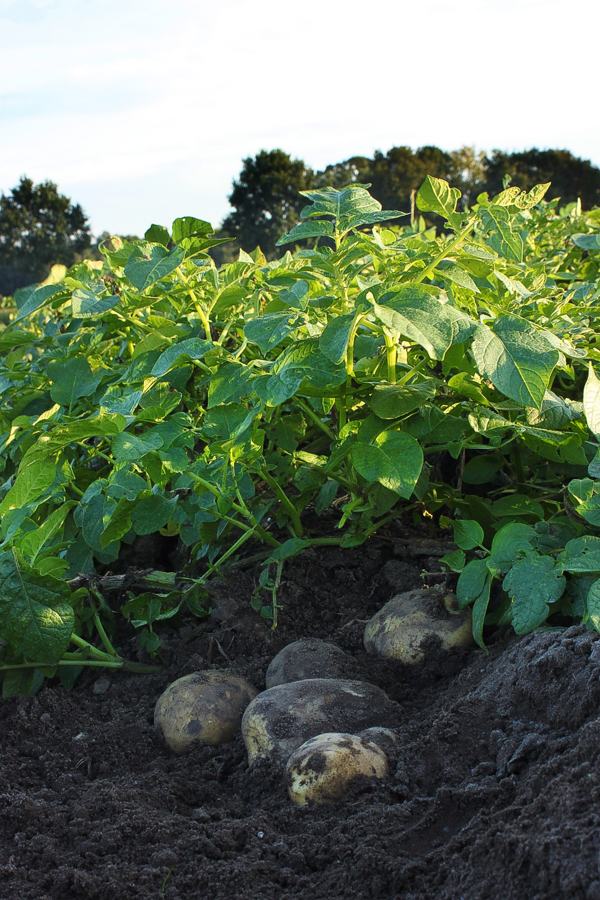
At the end of the growing season, use a broad fork or shovel to dig under the potato mound and gently pop open the soil. Avoid sticking the shovel into anywhere potatoes are growing, as you’ll cut them in half. Since you have a trench, try to put your shovel under the growing potato hills to open the potato mounds to the light.
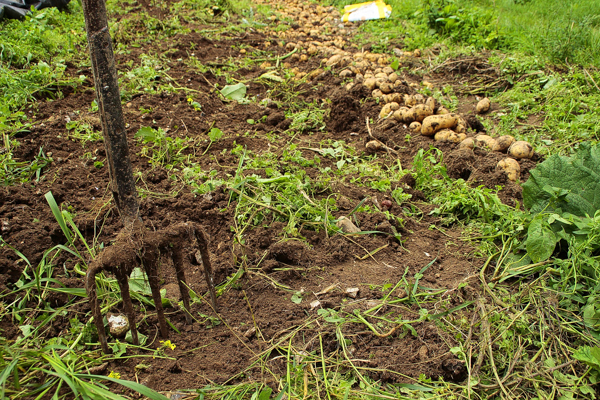
How to Cure Potatoes for Storage
Freshly harvested potatoes don’t store as well as potatoes that have been cured. The curing process toughens up the skin, which allows them to retain moisture in storage and avoid getting soggy.
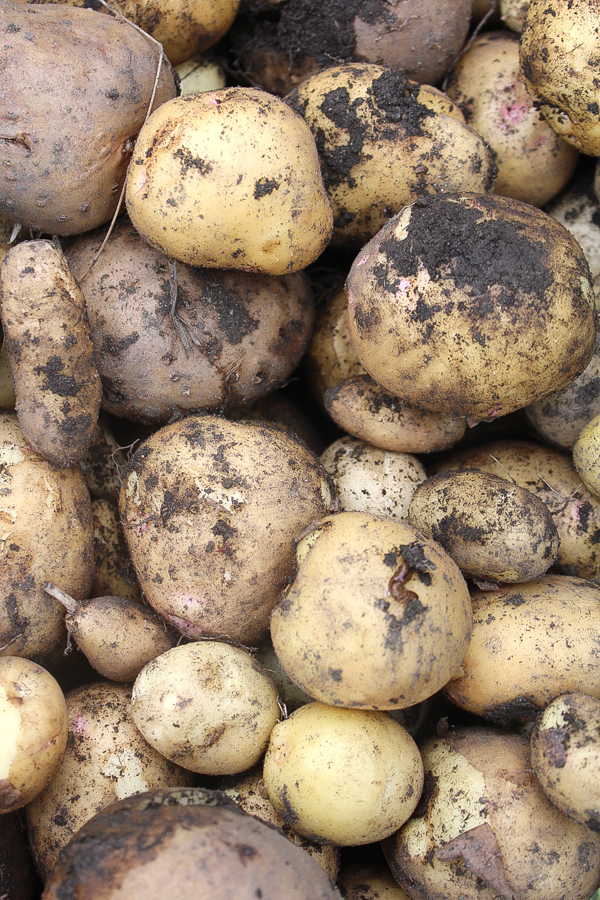
After harvest, don’t wash the potatoes. Dust off as much dirt as you can, but be careful. The skin rubs off very easily when they’re fresh. It’s better to leave them dirty and dust them off after they’ve had a bit of time to cure.
To cure potatoes, lay them out in a dark spot that’s about 60 degrees. Leave them there to cure for about 2 weeks. After that, you can dust off most of the remaining dirt and move them to a cooler location for long-term winter storage.
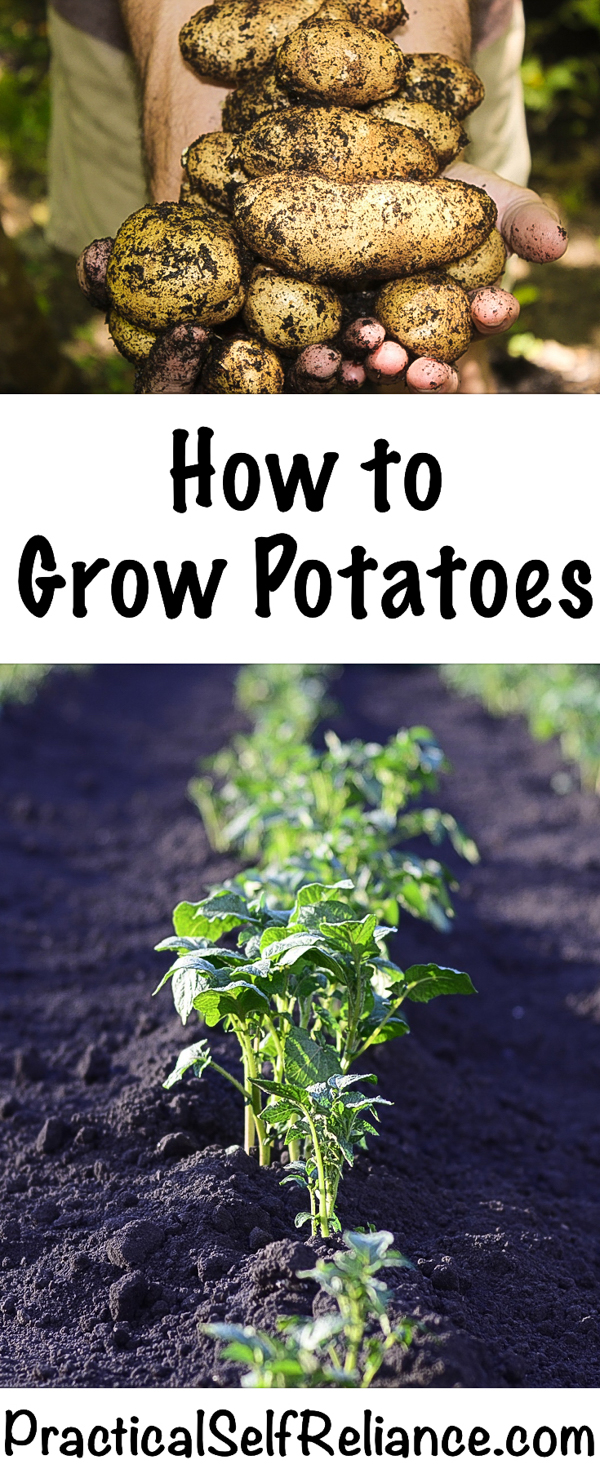
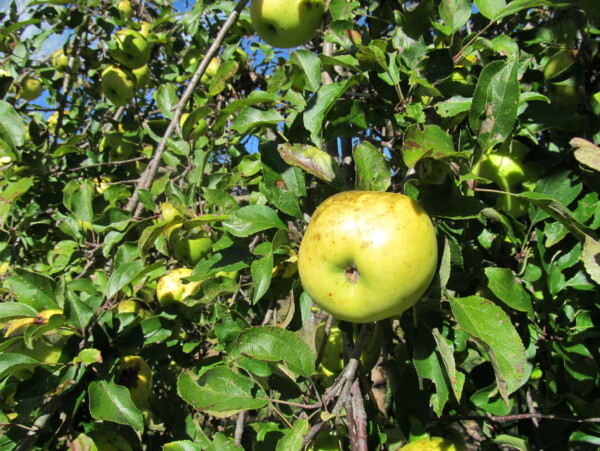



I’ve gardened for years and you’ve answered a few potato questions about which I have always wondered. 🙂 You are THE BEST resource! Your guidelines are clear, accurate, and not a word is wasted on nonsense. Also…last year, I printed your instructions for canning beans…and the outcomes were the most delicious beans ever! I was delighted today to see the link to *your* potato guide. 🙂 Thanks for all you do. You are appreciated.
You’re very welcome. We’re so glad the posts are helpful. Thanks for the kind words.
Thank you so much for your effort here.
A question I have is how to gauge what 1″ of water is when watering without a sprinkler. Is it a gallon per plant? Less, more?
Wes
It’s a little over half a gallon per square foot.
Hi there, Potatoes that are of an indeterminate variety will continue producing potatoes up the stem. But determinate varieties only require 4” of soil, and produce at one level only. In fact, mounding beyond this affects the productivity negatively because too much energy is robbed from the plant to make enough stem and leaves to get to the surface. Knowing which type you have and adjusting your planting technique is important and makes a real difference to a successor outcome.
Thank you for sharing this. I knew about indeterminate and determinate tomato varieties but didn’t realize that the same applied to potatoes as well.
You are a blessed spirit to share your wealth of information with everyone who finds your goldmine of a site. Last summer I started gardening again after 5 years of healing from a serious accident. Due to the brain injury, I had forgotten most of what I was taught as a young child.
Your site has helped me recover much of the knowledge that I thought was lost. This article was particularly helpful since last years potato yield was pathetic due to all the mistakes I had made. Being of Irish decent, I thought it would be second nature to me. Thank you and I look so forward to learning more from your wonderful site.
Blessings to you and stay healthy, safe and joyful.
Thank you so much!
This is great guidance! I am moving to Florida and being in between jobs, I want to do canning as much as possible. Thank you for the tips. If I can can my own potato harvest – even better!
Hi there! I learned alot from your article about growing potatoes but you didn’t address watering. How much and how often should the potatoes be watered? Should they be watered at ground level or is it okay to put them on a sprinkler? Thanks so much!
You want around 1 to 2 inches of water per week including any rainfall. You should be ok to put them on a sprinkler as long as you don’t notice and pest or disease issues. Just be aware that they can be more susceptible to pests and disease if there is excess moisture on the foliage.